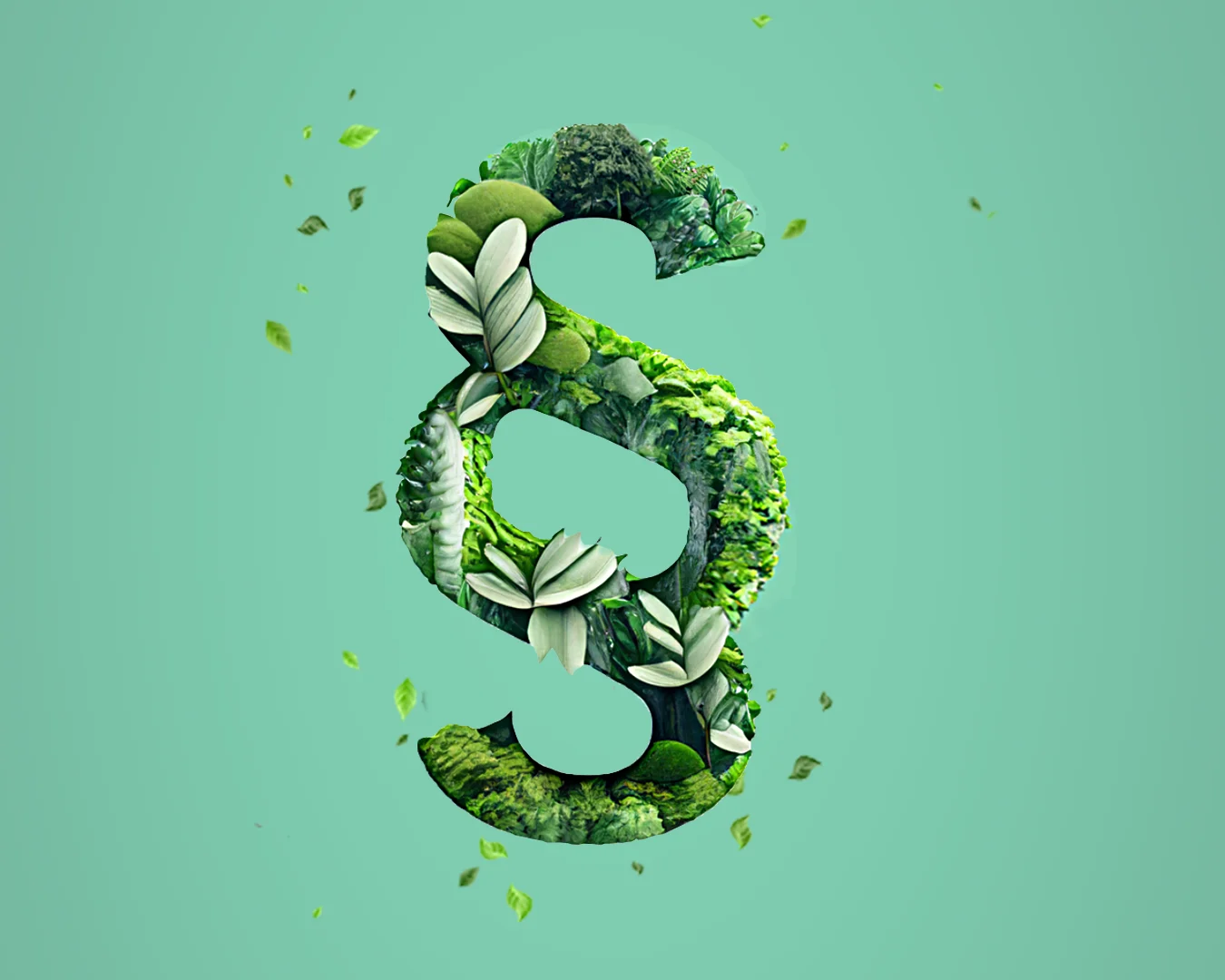
Sustainability
10 minute read
The top 5 sustainability trends of 2024
As the urgency to tackle climate change continues to ramp up, so does the world’s approach to sustainability, hallmarked by ever-increasing ambition, innovation and development. Journalist Ashley Winchester looks ahead into 2024 at the top five sustainability trends you need to know about.

1. Pivot point: fossil energy dethroned by renewables?
If the headlines from the recent COP28 meeting are any indication, 2024 is set to be the year of renewables. The new climate deal struck among nearly 200 nations in December 2023 includes language urging nations to transition away from fossil fuels. At the same time, more than 100 countries at the summit agreed to triple renewable energy capacity by 2030.
Already in 2024, renewable energy is set to reach a major milestone. A recent report by the International Energy Agency (IEA) is projecting that global renewable energy generation capacity will exceed 4,500 gigawatts in 2024, matching that of fossil fuel-generated energy. The IEA also projects renewables overtaking coal by 2025 as the world’s largest source of electricity.
So, will 2024 indeed mark the beginning of the end for fossil energy reigning supreme? The global efforts to accelerate the production and application of renewables, combined with the COP28 commitments, give cause for optimism.
In Europe, 22.5 percent of energy came from renewable sources last year, according to the European Environment Agency. The EU aims to nearly double that, to 42.5 percent, by 2030 – a target the bloc is already accelerating towards thanks to governmental subsidies, political pressure and consumer demand.
China and the U.S., two of the world’s largest fossil fuel users, recently committed to an accelerated effort to substitute coal, gas, and oil generation, and triple renewable energy capacity by 2030. Both countries have been ramping up capacity for non-fossil fuel energy over the past few years, and China’s non-fossil electricity generation capacity now exceeds 50 percent of its total installed electricity generation capacity. In the U.S., as with Europe, green energy policies backed by legislation, such as the Inflation Reduction Act, promise to bolster renewable energy efforts across multiple sectors of the economy.
Replacing fossil fuels in transport and travel, as well as power generation, is also ramping up. Renewable fuels – used from cars, trucks and heavy machinery to airplanes and ships – are already available as an effective and more sustainable drop-in alternative for fossil fuels, with products such as renewable diesel, sustainable aviation fuel (SAF), and next-generation marine fuels. Continuous raw material innovation and significant investment in production capacity – boosted by ever-increasing demand – are opening up the way to scale up these solutions to in time rival the dominance of fossil fuels. In late December, Neste, a global leader in the field of renewable diesel and sustainable aviation fuel, announced that it will gradually transition its last remaining oil refinery, located in Porvoo, Finland, into a renewables and circular solutions refining hub.
Meanwhile, green hydrogen – hydrogen produced from water through electrolysis by using renewable energy – is an advancing technology with huge promise that will increasingly enter the renewable fuel mix in 2024. Bolstered by government incentives like tax credits and subsidies, production is set to ramp up in the new year, with sites planned in Europe, India, and the United States. Yet another important development that could mark the year 2024 as a significant pivot point in the global goal to achieve a more sustainable future.

2. Disruptive sustainability to challenge the status quo
To tackle society’s greatest challenges, there needs to be a reboot on how corporations, governments, and consumers approach sustainability.
This was a clear message from the recent Sustainable Development Goals Summit in New York. The summit offered not only an urgent call to action but also, crucially, the need for a radical transformation. This involves leveling up ambitions in a way that is set to disrupt current business models and value chains – and how we live.
“In years past, corporate sustainability strategies were very piecemeal in nature – often performative and having little or dubious meaningful impact,” says Saleh ElHattab, CEO of Gravity Climate. “Today, sustainability is integral to a sound business strategy – good for bottom lines and customers, aligned to business values, and highly focused on the most business- and planet-critical issues.”
Beyond that is time to not be afraid to challenge the status quo and to think about different and more radical approaches to our ways of life. Disruptive sustainability, in other words, is about changing how we think, act, and do business in order to benefit the common good, and making meaningful commitments to change.

3. The rise of regulations to put greenwashing in check
Once upon a time, sustainability may have been seen by some as optional, and related claims little more than great marketing tools. But this is now changing rapidly, as new laws and regulations are beginning to create order in what has been a bit of a greenwashing wild west.
In 2024, businesses will not only need to level up their sustainability ambitions, but there will also be increased requirements to back their claims and to report data in relation to those.
In the EU, for example, a new bundle of regulations and directives are targeting green claims in advertising. The “Green Claims Directive,” proposed by the European Parliament in March 2023, would control how products may be advertised in terms of their environmental claims or durability. It also will standardize some labeling and ban claims of reduced environmental impact based solely on emissions-offset schemes.
Another major legal driver of change in Europe is the Corporate Sustainability Reporting Directive (CSRD), which aims to enhance corporate transparency and accountability in relation to environmental and social responsibility performance. The new EU law sets standards for reporting on sustainability for companies, while building on international standardization efforts. Listed companies with more than 500 employees falling under the directive in the first wave of implementation will need to be applying these rules starting in 2024, for the first reports to be published in 2025. This significantly increased reporting requirement will give far more clarity to investors, consumers, and other stakeholders as they seek to evaluate businesses’ sustainability performance – and to see the wood from the trees.
In the United States, similar regulation is in the works in California. The state, which leads the nation for clean energy standards, will soon require large companies to report their carbon emissions. This new law, the California Climate Corporate Data Accountability Act, goes into effect in 2026, with reporting standards similar to the EU’s CSRD. Moreover, a second bill in the works will require certain companies to report their “climate-related financial risk and measures adopted to reduce and adapt to climate-related financial risk” by the end of 2024.

4. Artificial intelligence to power sustainability
Navigating new regulations, meeting new reporting standards and ensuring robust carbon management practices – all within increasingly complex supply chains: it’s no small challenge for businesses striving to hit ambitious sustainability goals. Emerging technology, such as carbon management software platforms powered by artificial intelligence, are set to be a game-changer in 2024, helping businesses cut through the otherwise labor-intensive data crunching process of carbon accounting.
“Complying with these ever-changing disclosure requirements can be a daunting task,” says ElHattab. “Whether it’s improving energy efficiency, switching to lower-emission alternatives, or optimizing supply chains — three of the most critical issues for our industrial customers — the data-driven insights provided by effective accounting platforms will help create more resilient, sustainable operations for businesses across the globe.”
Supply chain emissions, or scope 3 emissions – where most of a company’s carbon footprint often lies – are a particularly complex area to measure and manage. With AI-driven software identifying more sustainable alternatives to existing links in the chain will be much easier.
“AI offers a unique capability to drive certainty and actionable insights into corporate operations, enabling the identification of inefficiencies across a global operation,” adds Harris Chalat, the co-founder and CEO of Muir AI, “This technology will drive real change, by integrating carbon into a company's day-to-day operations.”
The potential for AI to reach for more ambitious sustainability targets go much beyond supply chain management. Another application is emerging for example in the agricultural sector. For example, UN Climate Change’s Initiative on Artificial Intelligence for Climate Action cites AI-driven algorithms as a way to power precision agriculture effectively. By analyzing soil data, plant health, and weather forecasts, AI can provide actionable insights for precise irrigation, fertilization, and pest management – leading to more sustainable farming practices.

5. Nature-positivity and biodiversity: The new drivers of the sustainability agenda
The World Economic Forum’s Global Risks Report ranks biodiversity loss as one of the top five threats facing humanity in the next decade.
In 2024, biodiversity and nature-positivity will become central to how we discuss and strive for sustainability. Companies are expected to both set nature-related targets and publicly disclose the progress made in the area.
“When discussing sustainability, topics like GHG emissions and pollution are heard most often. But the conversation surrounding biodiversity loss and sustaining nature has been growing for a while now,” says Asta Soininen, an associate in sustainability and regulations at Neste.
“To be able to mitigate the changes caused by climate change – for example rising temperatures and increased rainfall – it is crucial that biodiversity is taken care of. Global challenges, like water scarcity, ecosystem decline, species extinction and raising temperatures, are all connected, and we are not able to solve one without taking into account the other,” Soininen says.
It has been a busy year for nature being placed center-stage in major sustainability frameworks and initiatives, paving the way for action and implementation in 2024.
The U.N. Kunming-Montreal Global Biodiversity Framework led the way, setting a goal to reverse biodiversity loss by 2030 and to achieve full recovery of biodiversity by 2050 with a focus on the impact of more sustainable trade: “When trade is sustainable, legal, and traceable, it can be a key element to conserving biodiversity and its ecosystem services while supporting livelihoods of local communities.”
This drive to put nature to the front and center was further supported by the Science Based Targets Network (SBTN) publishing the first release of science-based targets for nature, providing guidance to help companies assess, prioritize, and address their impacts on nature. Companies are now being called on to apply the guidance and begin setting targets for validation from 2024 onward.
Another major release stemming from the U.N. Biodiversity Conference held in late 2022 was the TNFD Recommendations by The Taskforce on Nature-related Financial Disclosures. It seeks to “inform better decision making by companies and capital providers, and ultimately contribute to a shift in global financial flows toward nature-positive outcomes.” The publication was released in September 2023, enabling organizations across sectors to prioritize nature in 2024 and beyond.
Credits:
Ashley Winchester, Ashley Winchester is an American journalist whose work has appeared in The New York Times and the BBC, among other national and international publications.
